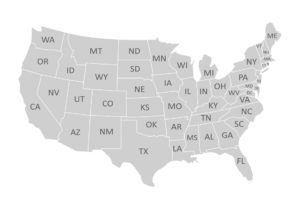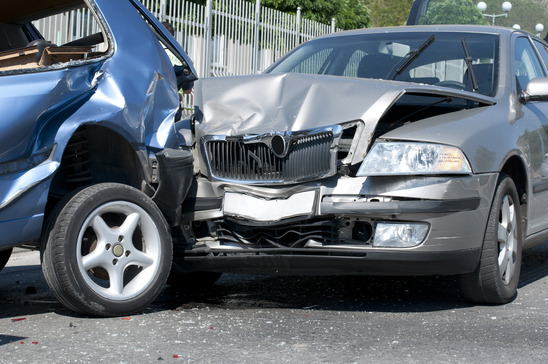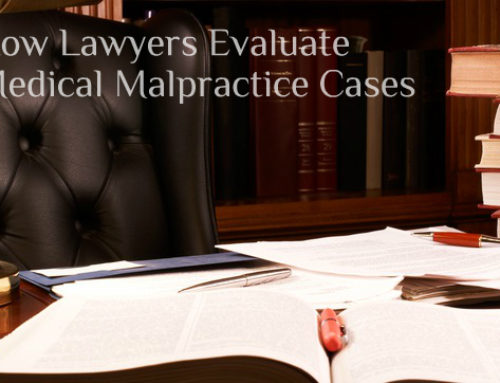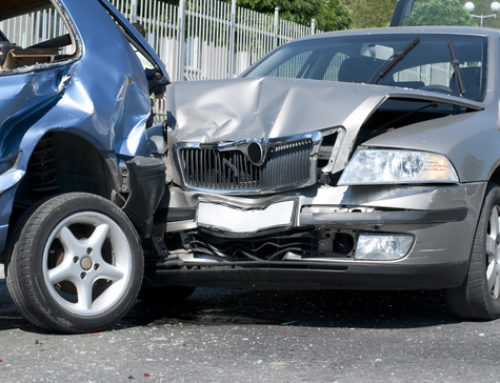Your options for having damage from an accident paid for by your insurance company depend on the state where you live. Currently, there are twelve states with some variation of the no fault auto insurance laws. These are known as no fault states.
To understand your insurance needs and your rights after an accident, you also need to know the differences in requirements among these states. You also should understand your rights if your state isn’t a no fault state.
In no fault insurance states, a driver’s auto insurance pays their damages no matter who was at-fault. Depending on the state of residence and the specific policy, there is a cap on how much the insurance company will pay. In contrast, the majority of states overall still have a tort insurance system. If you live in one of these states, the at-fault driver’s insurer pays for damages caused by an accident.
What States Are No Fault States?
Let this guide help you decide which type of state you live in. It’s always a good idea to know your rights in case of an auto accident. It can also help you decide on the types and amount of coverage you really need.
If you live in one of the no fault auto insurance states, you have the guarantee of getting paid up to a certain amount. At the same time, you and the other driver have fewer rights at obtaining compensation through a lawsuit. You receive the same amount for damages even if you or the other driver is 100% at fault for the accident.
Some no fault states require drivers to carry personal injury protection (PIP). This coverage pays for bodily injuries in spite of who is at fault. While the non-fault driver might sue the at-fault driver in a typical tort insurance state, the driver’s personal injury coverage pays for their injuries regardless of who was at fault.
- Florida – The State of Florida mandates that drivers carry $10,000 in personal injury protection (PIP). This coverage pays in case of injury to you, your passengers, or any other authorized driver included on your cover. The PIP coverage applies to your vehicle, not just to you as the driver.
In addition, the state requires you to carry $10,000 of liability coverage to pay for the other driver’s vehicle. Property damage liability insurance applies to the property of the other driver. Keep in mind that these amounts are the minimums required by the state. You also have the option to purchase additional coverage to protect you in cases where the damages exceed your policy limits.
Although additional bodily injury liability coverage isn’t required by the state, many auto insurance companies require the coverage as part of every policy they write. This is because accidents that occur in no fault insurance states are only covered to the limits of the policy. Everything beyond that becomes the responsibility of the at fault driver.
- Hawaii – The State of Hawaii is considered average for their $20,000 per person and $40,000 per accident minimum liability coverage. The state also has a $10,000 per accident property damage requirement. It’s easy to see why Hawaii residents need to purchase additional coverage for accidents involving newer vehicles or extensive damages.
Hawaii also requires drivers to purchase personal injury protection at a minimum of $10,000. They also have the option to purchase managed care (PPO) in lieu of PIP coverage. PIP benefits pay for medical expenses but do not extend to lost wages, death, or interment costs.
The choice of PPO managed care instead of PIP coverage is a more affordable option for some drivers. Other ways to reduce insurance premiums are to add a deductible or a co-payment. Hawaii is also one of the few states that doesn’t use your credit history to calculate insurance premiums and charge more.
- Kansas – The State of Kansas requires minimum coverage of $25,000/$50,000 (per person/per accident) for bodily injury, $25,000 for property damage, and $25,000/$50,000 for under-insured and uninsured motorist bodily injury. The latter pays when the other driver lacks coverage to meet the amount of damages resulting from the accident.
Kansas also requires drivers to carry personal injury protection for $4,500 medical and $900 work loss. Unlike other states, the personal injury protection (PIP) coverage is divided in several ways. It includes $4,500 per person to cover needed medical treatment, $900 per month for loss of income or for resulting disabilities, and $25 per day for in-home services due to injuries.
Additional coverage under the PIP protection includes $4,500 for the costs of rehabilitation and survivor benefits of up to $900 monthly to cover the cost of lost income. The ongoing benefits paid out daily or monthly last for one year. Kansas drivers are also required to carry liability coverage for any damage they cause to other people and/or their property.
- Kentucky – The State of Kentucky is one of only a few no fault states that offers drivers a choice between no fault and traditional tort insurance coverage. Drivers have the option to buy a minimum of $10,000 in PIP coverage but taking it isn’t a requirement. Electing to take the coverage ensures they get medical treatment for car accident injuries regardless of who was at fault.
Kentucky places monetary thresholds on insurance claims. Currently, drivers can only file injury claims or file personal injury lawsuits if their costs exceed $1,000 or the injury is serious, permanent, or results in death. The state does require drivers who reject PIP coverage to purchase Guest PIP coverage to provide their passengers and pedestrians with basic PIP benefits.
Another option offered to Kentucky drivers is a “buy-back provision.” This allows the driver to keep PIP and also retain the right to sue for damages. The downside to this option includes higher premiums and giving the other driver the option to sue you as well.
- Massachusetts – The State of Massachusetts requires a minimum coverage of $20,000/$40,000 for bodily injury liability, $5,000 for property damage liability, $20,000/$40,000 for under-insured and uninsured motorist bodily injury, and $8,000 for PIP coverage. The state’s PIP coverage pays the first $2,000 of the driver’s medical expenses before their health insurance kicks in.
Most drivers purchase the cheapest option available to them, which usually just meets the state’s requirements. The problem is that this isn’t always the best choice for all drivers. For example, if you don’t have health insurance and you purchased the minimum $8,000 PIP coverage, any medical expenses over the amount aren’t covered.
Massachusetts also offers optional medical payment insurance called MedPay to cover additional medical costs or funeral expenses after an accident. While this option isn’t usually needed for drivers with PIP coverage, it does add medical coverage for those who don’t have health insurance.
- Michigan – The State of Michigan has the most comprehensive no fault system of the no fault states. The state requires a minimum of $20,000/$40,000 in bodily injury liability coverage and $10,000 in property damage liability coverage. Also unique to the state is the minimum of $1 million in PPI coverage and PIP coverage for medical and work loss.
The PPI coverage is specific to Michigan and it only covers unintentional damage to other people’s property. PIP is for medical expenses and includes unlimited lifetime coverage. In most cases, the PIP coverage offers adequate compensation without the need to tap into bodily injury liability. Still, many drivers prefer to pay a little more each month to ensure they have adequate coverage in case of serious accidents.
- Minnesota – The State of Minnesota requires a minimum of $40,000 in PIP of which $20,000 is allowed for medical expenses. Recipients may use the remaining $20,000 for non-medical expenses and lost wages due to the accident. One difference that sets Minnesota apart from other no fault insurance states is that once the driver exceeds the amount of the PIP, they have the option to make claims against the at-fault party.
Minnesota also requires coverage of at least $30,000 per person for bodily injury liability and $10,000 in property damage liability. The amount of $10,000 is exceptionally low and puts you at risk for lawsuit if you are the at-fault driver in an accident. The PIP minimum is also low for serious accidents and injuries requiring extensive medical treatment.
- New Jersey – The State of New Jersey offers drivers the choice between basic and standard auto insurance. The basic coverage is the most affordable and meets the state’s minimum requirements. These include $5,000 for property damage liability and PIP coverage for $15,000.
The standard insurance policy for New Jersey drivers includes $15,000/$30,000 for bodily injury liability, $5,000 for property damage liability, $15,000/$30,000/$5,000 for uninsured/under-insured motorist bodily injury/uninsured motorist property, and $15,000 in PIP protection.
- New York – The State of New York has some of the highest insurance policy requirements of all the no fault states. New York requires $25,000/$50,000 in bodily injury liability, $10,000 minimum property damage liability, $25,000/$50,000 in uninsured motorist bodily injury, and $50,000 in PIP coverage.
New York PIP protects you whether you are the driver, a passenger in someone else’s car, or a pedestrian. Drivers also have the option to get additional coverage through MedPay for medical or funeral expenses up to $25,000.
- North Dakota – The State of North Dakota is one of the no fault states with minimal liability coverage of 25/50/25 to protect you if you cause other people harm. The $30,000 minimum personal injury protection protects the driver. Once you reach the $30,000 limit of PIP coverage, you need to file against the at-fault driver’s liability policy for additional financial compensation.
The state requires a minimum of uninsured/under-insured motorist bodily injury coverage of $25,000/$50,000. This coverage pays when you are injured by a driver who is under or uninsured.
Teens of fourteen years of age can obtain their driving permit and get their restricted driver’s license at fifteen. The young driving age increases the number of young drivers on the road and increases the potential insurance premiums that parents must pay. In many cases, paying the additional cost of more coverage is the best option for parents of teen drivers.
- Pennsylvania – The State of Pennsylvania tends to offer lower priced insurance premiums in comparison to the other no fault states. The state mandates drivers purchase first party benefits to cover medical expenses for drivers and anyone listed on their property. Minimum state requirements include $15,000/$30,000 for bodily injury liability, $5,000 for property damage liability, and $5,000 for first party benefits.
The state’s minimums for liability insurance are extremely low in comparison to the other no fault states on the list. Most of us know that $5,000 won’t get you very far these days, even when treating a seemingly minor injury. Anyone with savings or other assets to protect should consider additional coverage.
- Utah – The State of Utah is considered average with regards to state-mandated insurance. Requirements include $25,000/$65,000 bodily injury liability, $15,000 of property damage liability, and $3,000 PIP coverage to cover immediate medical care. State-mandated liability insurance covers medical bills in excess of $3,000.
Utah implements a point system to reduce the likelihood of accidents. Drivers who collect 200 points for various traffic violations lose their driving privileges. When serious accidents result in serious injuries, it is the amount of liability insurance coverage that matters.
In addition to being a no fault state, Utah is also a “modified comparative fault” jurisdiction. This allows drivers to recover damages from other drivers who are more at-fault than they are. One perk for Utah drivers is the court’s practice of awarding punitive damages in cases where insurance companies have denied claims in bad faith.
FAQs
Why should I pay more to get better insurance coverage if I live in one of the no fault states?
The idea of no fault laws is to ensure everyone has the option to get medical treatment following an accident. The low minimum requirements generally won’t cover the amount needed to treat some injuries. The cost of additional coverage is often more affordable than having to pay the excess out-of-pocket.
What if my cost for medical treatment is much higher than my PIP coverage?
Although the trade-off for having guaranteed coverage for your injuries is the surrender of your right to sue, you may still have the right to sue. It depends on your state and the circumstances of your accident. Ask a car accident attorney about your options in your residential state.
What are my options for financial recovery if I don’t live in one of the no fault states?
As mentioned in this guide, traditional tort insurance systems determine who pays for damages according to which driver is at fault. All of the states but the twelve on the list of no fault states implement a traditional tort system. You need to contact an auto accident attorney soon after a car accident to learn which steps to take to get optimal recovery.
Can I always file a personal injury claim if I live in an at-fault state?
The best course of action in any state is to talk with a car accident attorney. One example of how state laws make a difference is that of Maryland’s PIP coverage. While Maryland is an at-fault state, PIP coverage is the exception. You can make a PIP claim regardless of who is at fault.
Contact Ingerman & Horwitz, LLC to learn more about your rights following an injury-causing accident. Regardless of whether you live in a no-fault state or not, you have the right to get compensated for the cost of your injuries.















